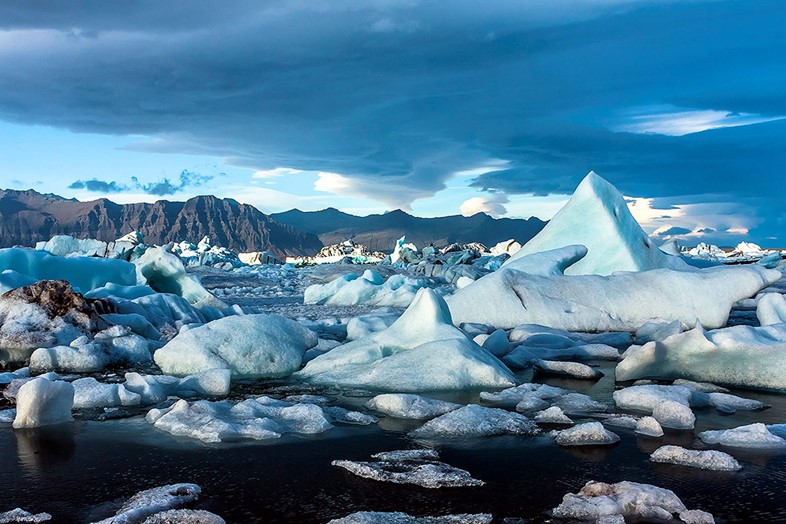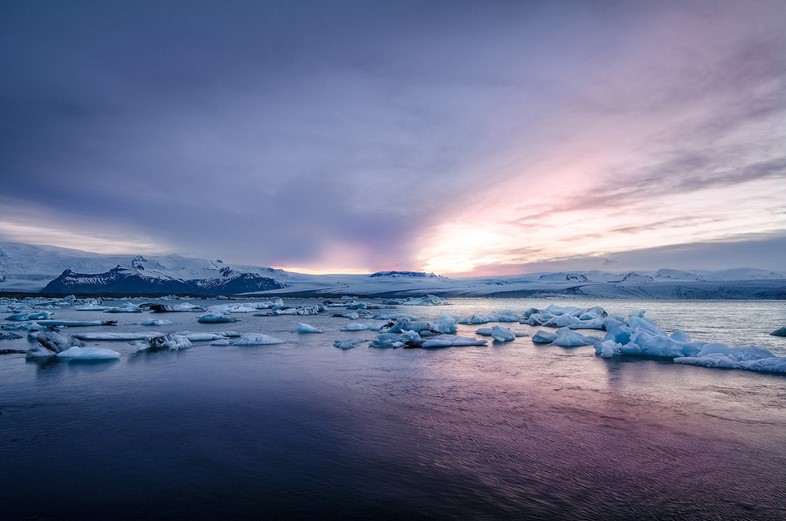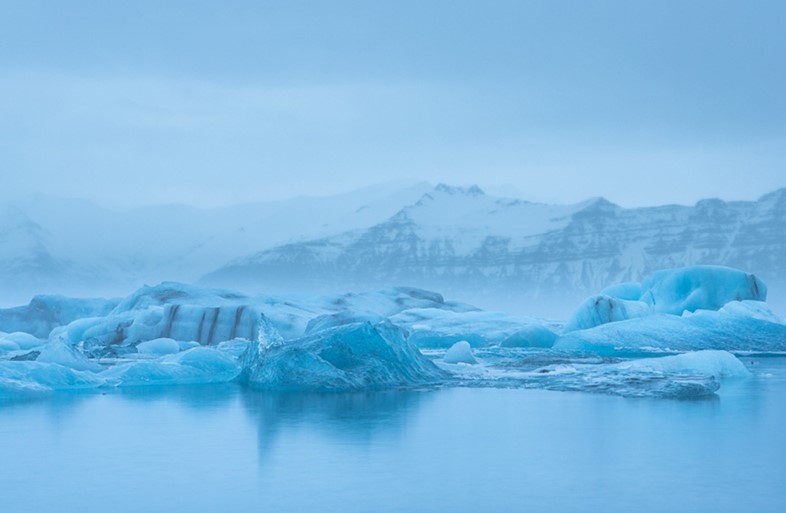super/collider travels along the south coast of Iceland to a stunning lagoon where a towering glacier meets the North Atlantic
Where on Earth?
Jökulsárlón, Iceland
GPS Coordinates: 64°04′N 16°12′W
Drive east along Iceland’s southern coastline and it’s easy to get wonder fatigue. Leaving the area around Reykjavik –home to the majority of the country’s population of just 323,002 people – you soon find yourself in a surreal landscape, or rather a succession of them, as you venture further into the wild. Vast mossy boulder fields give way to steaming sulphur rivers, glaciers reach up to meet icecaps that stretch beyond comprehension, waterfalls pour down from the basalt hills (or often get blown right back up into the sky by the coastal winds), craggy islands float in the distance offshore, black sand beaches stretch to the horizon and all the while the sun and rain and clouds create an ever-changing palette of light. After a while, you even stop pausing for rainbows.

Forge on east, through the vast, empty landscape known as Skeiðarársandur – where the interaction of volcanic eruptions and melting glaciers periodically unleashes devastating torrents that sweep the land clear – and you come to a place where the flow of ice is much more sedate. Travel beyond the towering Hvannadalshnjúkur (a pyramidal peak on the crater rim of the Öræfajökull volcano that forms Iceland’s highest point) and you come at last to Jökulsárlón, where the ice meets the sea.

What on Earth?
At the Jökulsárlón lagoon, on the edge of Vatnajökull National Park, the Breiðamerkurjökull glacier once reached all the way to the ocean. Flowing down over the decades from the great ice cap at Vatnajökull, this vast white conveyor belt now ends about 6km inland. Towering 100ft chunks of ice regularly come loose or ‘calve’ away from the face, crashing into the water. Deep below, carved out by the glacier, the rocks have been eroded away below sea level – creating Iceland’s deepest lake.
As the glacier slowly recedes, it’s leaving behind a wilderness of icebergs of varying sizes, colours, shapes and transparencies. Some are streaked with black volcanic ash while others are pure blue. Many are see-through while others look like lumps of snow. The smaller pieces flow down through an outlet to the sea and wash up as surrealist art on the black sand beach, while others are so big it’s hard to imagine them ever shifting. Amid the silence and the occasional sound of cracking ice, seals dart amongst the floating ice blocks while seabirds wheel overhead.

How on Earth?
Getting to Jökulsárlón is an easy, if long, journey from Reykjavík – just take Route 1 east and you can’t miss it. Excursions around the lagoon are available in amphibious buses or faster zodiac boats, and you can also explore the glacier itself. As with many sights in Iceland, having the place to yourself is easy: head there at sunrise or sunset, stay over or simply just take a walk along a shoreline a little (be wary of quicksand and the freezing water) and you’ll soon leave the real world behind.
